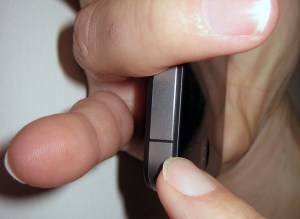 Get ready to potentially rehash all the drama of Antennagate. It’s already been widely reported the phone is subject to the same issue, but it’s now being verified by a round of tests from Consumer Reports. According to the results, the Verizon iPhone 4 is experiencing all of the same signal troubles we saw last year with the AT&T model. Just like last time, the publication is reporting that users are liable to lose their connection when the gap in the phone’s metal casing is being blocked at all.
Get ready to potentially rehash all the drama of Antennagate. It’s already been widely reported the phone is subject to the same issue, but it’s now being verified by a round of tests from Consumer Reports. According to the results, the Verizon iPhone 4 is experiencing all of the same signal troubles we saw last year with the AT&T model. Just like last time, the publication is reporting that users are liable to lose their connection when the gap in the phone’s metal casing is being blocked at all.
Of course, just like last time, there’s a very simple solution: Various cases for the iPhone 4 will eliminate the problem. In response, Verizon has said its customers are experiencing “stellar network performance,” and that less than 0.5 percent in major cities have had their calls dropped.
Nonetheless, according to Consumer Reports, the Verizon iPhone is not immune to death grip. “It can occur when you hold either version [AT&T or Verizon] of the phone in a specific but quite natural way.” The tests also compared the Verizon iPhone 4 to a slew of other highly rated Verizon smartphones, incluing the HTC Droid Incredible and the Samsung Fascinate. “The only phones in which the finger contact caused any meaningful decline in performance was the iPhone 4…As with our tests of the AT&T iPhone 4, putting a finder across one particular gap – the one on the lower left side – caused performance to decline.”
While the problem is the same, Consumer Reports did reveal that voice quality varies between the different carriers’ models. According to testing, Verizon’s iPhone 4 had superior sound when it came to calls placed, while AT&T was the winner when it comes to calls received.
Editors' Recommendations
- Best refurbished iPhone deals: Get an iPhone 14 for $513
- Best iPhone deals: Save on iPhone 15, iPhone 15 Pro Max and more
- How to find your lost phone (tips for iPhone and Android)
- Why you should buy the iPhone 15 Pro instead of the iPhone 15 Pro Max
- iPhone SE 4: news, rumored price, release date, and more


